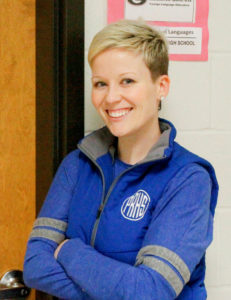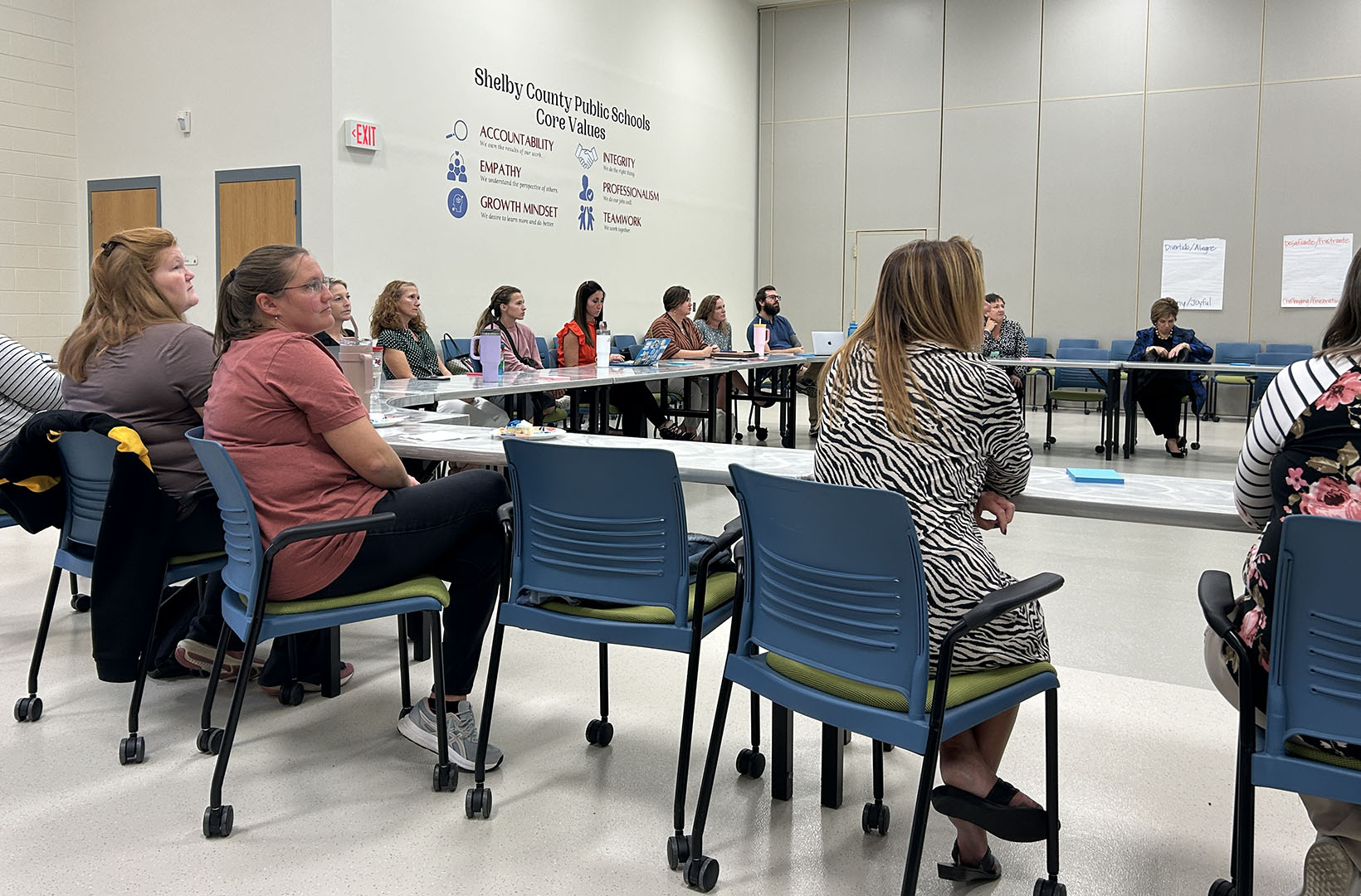This article is the second in a series of four articles that will highlight (and “hack”) the American Council on the Teaching Foreign Languages’ (ACTFL) six core practices in the context of actual classrooms. These Core Practice Hacks are meant to guide both planning and instruction. In each will be ideas, examples, and reflection points for us, as teachers, to get R.E.A.L. about what’s going on in our classrooms. R.E.A.L. stands for the process of reflect, energize, assess and lead.
Read the series:
- Core practice hacks: Let’s get R.E.A.L.
- Core practice hacks: Tips and tools for engaging students
- Core practice hacks: But, for R.E.A.L.
Picture it: It was the spring of 2013 and I was teaching six Spanish I and II classes, each of which had 35 or 36 students. My administration was – unbeknownst to me – about to give me a professional development plan that could dictate my future at that school. My sanity and possibly my job were at stake. What now?
In order to tighten up my classroom management as well as my language instruction, I decided to video record an entire class period twice a week every week for a semester. Watching those recordings was a much-needed wake up call. As explained in the first article of this series, it first and foremost highlighted my lack of target language use.

Meredith White
Secondly, I saw that my planning was lacking. I had great ideas, but they didn’t mesh with each other. For example, we would do a reading (usually from the textbook), then play some fly swatter, followed by a couple of (contrived) audio track listening exercise, wrapped up by another game.
I was able to articulate what the four different modalities were (reading, writing, listening, and speaking), but not the three modes (interpersonal, interpretive, and presentational), and I certainly didn’t know how they worked together. Even if someone had explained it, I am not sure I would have understood it. I was still a young teacher without much experience, and I was surviving.
Fast forward about three weeks later, I had by then watched myself teach an entire class roughly six times. As I consciously increased my target language use and worked to be more comprehensible, I was able to see the flaws in my planning. It was becoming more difficult to transition my students to the next activity in the target language because there was no natural segue. I was filling 47 minutes, not creating learning experiences for my students.
If a transition or follow-up activity has to be carefully planned or the relevance is not immediately obvious, then our teaching and our planning are not transparent enough. When backward design is working as it should, activities become stair steps.
My students were finding it hard to understand my increased amount of Spanish not only because they had not ever heard me speak it that much, but also because my activities were glaringly irrelevant to each other. Sure, over time they learned some vocabulary, some grammar rules out of context and we enjoyed each other’s company, but there was not much intention behind my planning.
Lastly, I discovered by watching the videos of my classes that my students could opt out of class work altogether and 1) still pass my assessments, and 2) not call any attention to themselves. So, what did I change?
First, I attended Norah Jones’ 2013 Southern Conference on Language Teaching session in Birmingham, Ala., where she said, in the context of using authentic resources, “Every day should be an IPA (integrated performance assessment)” and that changed my life. Our planning can be simplified by taking the three modes (interpretive, interpersonal and presentational) and designing tasks that work together toward those ends.
IPAs model the natural stream of information. First we watch/read something (interpretive); then we turn to, call, text or e-mail a friend saying, “Whoa, did you see …?” (interpersonal); last, we tell someone else, post on Facebook or talk about it at the dinner table (presentational, that becomes interpersonal if others engage). We do IPAs in our lives, why was I not planning my lessons according to how we naturally acquire and negotiate with language and information?
At the end of March, armed with my professional development plan, several hours of class recordings and copious notes from Norah Jones’ session, I revamped my lesson planning with just eight weeks of school left.
Instead of dividing my 47-minute class periods into several paced-out activities, I planned out the result first. I was backward designing each day’s lesson with intention, basing our activities on the exit card I had created, the quiz they had the next day or any kind of intermediate end point for which I wanted them prepared.
If I knew the exit card was going to be, “Write five sentences describing yourself,” then we did activities that developed the skills they would need to do that. First, we defined characteristics that pertained to ourselves; then we peer-edited for gender; lastly we sketched quick images to refresh our memory as a picture bank rather than a word bank.
I realized that those activities were still separate to a degree, so I adjusted each one to rely on the previous one, meaning students could not opt out and opt back in without being noticed. If activity two depends on activity one, (“OK, now we are going to take that word bank you created describing yourself and put it into context,”) then they have to do both, and if they do not, it is glaringly obvious. Even getting to the next step in an activity becomes a formative assessment because I was able to see what stopped them.
Using this kind of planning, even undesirable behaviors were curbed. Students typically exhibit those behaviors when tasks are too easy or too difficult. Once my activities made sense together and built off of one another, my target language use made sense and was not overwhelming, my students were noticeably more on-task and less disruptive.
As my exit cards increased in transparency and relevance, it was time for feedback. My feedback previously had been marking accents, underlining misspelled words and writing a number over another number, such as four out of five. None of that is bad, but I was not providing any feedback pertaining to their growth, progress or next steps. I was not teaching toward proficiency.
Once I was assigning exit cards, or anything really, based on progress and what I thought they should be able to do by a certain day, I had to actually sit down and provide feedback. They were turning in exit cards with lots of wonderful errors because they were experimenting with language in creative ways, but I had not seen it that way. I only saw it as a negative, but they were creating opportunities for feedback. I started recycling exit cards less, reading them more and writing on them more.
My writing went from, “4/5,” “Good!” and “Yes!” to “Love the risks you take here! Is there a way to mention your family, too?” and “Oh wow, I did not know that! That is my favorite, too!” Instead of writing “4/5,” the one that was “wrong” before had question marks next to it showing that it was incomprehensible, or maybe a note of, “What were you going for here? I read it as ____,” and that sufficed.
However, because we are human, it is not sustainable to read 204 exit cards and comment individually every single day. As a result, my planning became much more in-tune with what I wanted the students to be able to do and with what I had going on. When I was planning to fill time and collecting student work to control behavior, I was overwhelmed with piles of work I knew were irrelevant. When I was purposeful with what I was assessing, and because a formative assessment like an exit card did not come with the pressure to grade and input, I was more methodical in when I assigned them.
For example, if my students have (formative) exit cards each day during the week toward a (summative) quiz on Friday, I may give verbal or written feedback on Monday and Wednesday, but glance over Tuesday’s and Thursday’s cards to adjust my next lesson plan. Or on Thursday as part of the warm-up, the students write a reflection as to how ready they feel to do X, Y and Z on Friday’s quiz. As they get started on the day’s assignment – something they can do independently – I walk around and comment verbally to those who do not feel prepared where they can find specific study resources on our class Google calendar, what to pay particular attention to that day during class that may help and so on.
In forcing myself to become more intentional, connected and in-tune with my own planning, my student feedback was transformed into relevant, genuine building blocks for students. Later, as I engaged in more and more training in teaching toward proficiency, other areas of my teaching strengthened. Student relationships, which had always been very positive, transcended to great because I was incorporating personalized rigor into class. Now they can articulate their current language skills, say what their next proficiency-based goal is, explain what it will take for them to reach said goal, and that has been a wonderful journey.
In getting R.E.A.L. with myself, areas that were previously overwhelming me and causing stress (planning, assessment) have become the most invigorating part of teaching. In being R.E.A.L. with ourselves – reflecting, energizing (especially when it is not easy), assessing and leading – we work to make each day mean something to our students. As students, colleagues and supervisors will tell you, that work makes all the difference.
Meredith White teaches Spanish at Peachtree Ridge High School (Gwinnett County Public Schools), in Suwanee, Ga. She is on the Executive Board of the Southern Conference On Language Teaching (SCOLT), and she serves as its program co-director and social media coordinator. In addition, she is a doctoral student, #Langchat moderator, and Path2Proficiency blogger.




Leave A Comment